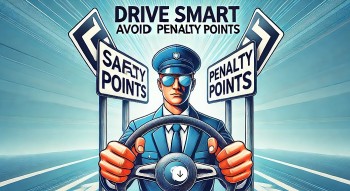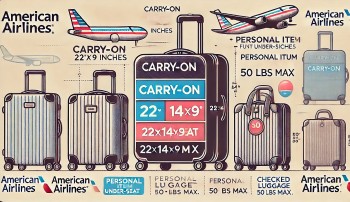What Happened to the USSR? The Rise, Fall, and Future of the 15 Post‑Soviet Republics
 Mysterious Crash That Killed Yuri Gagarin - World's First Cosmonaut- Fack Check Mysterious Crash That Killed Yuri Gagarin - World's First Cosmonaut- Fack Check It's easy to dismiss the pilot's competence and terrible weather as a flimsy explanation for Russian cosmonaut Yuri Gagarin's death, but they're actually the only ... |
 Top 10 Well-Known Soviet Spies Operating Within the United States Top 10 Well-Known Soviet Spies Operating Within the United States Do you know any Soviet spy working in the US? There are lots of unknown stories about them. |
 |
| Timeline Graphic: “The Collapse of the USSR and the 30-Year Transformation |
The dissolution of the Soviet Union in December 1991 marked a major geopolitical shift. From 1922 to 1991, the USSR comprised a federation of 15 republics spanning much of Eurasia. With its end, fifteen independent states emerged. They inherited not only the territorial lines, but also institutional legacies, economic systems, societal patterns and geopolitical relationships.
Today – in 2025 – the so-called "post-Soviet space" is no longer a uniform bloc under Moscow's shadow: many states are exercising greater agency, pursuing distinct economic models and forging diverse foreign-policy paths.
This article will examine:
-
The Soviet legacy — its structures, reach and collapse.
-
The transition: how each republic (in broad regional groupings) navigated independence, political restructuring and economic reform.
-
The current status: major patterns, regional divergences, and fresh dynamics in the post-Soviet landscape.
-
Key implications and what to watch going forward.
Read more: Former Soviet Union (USSR): What Happened to the 15 Republics Today
Part I: The Soviet Legacy
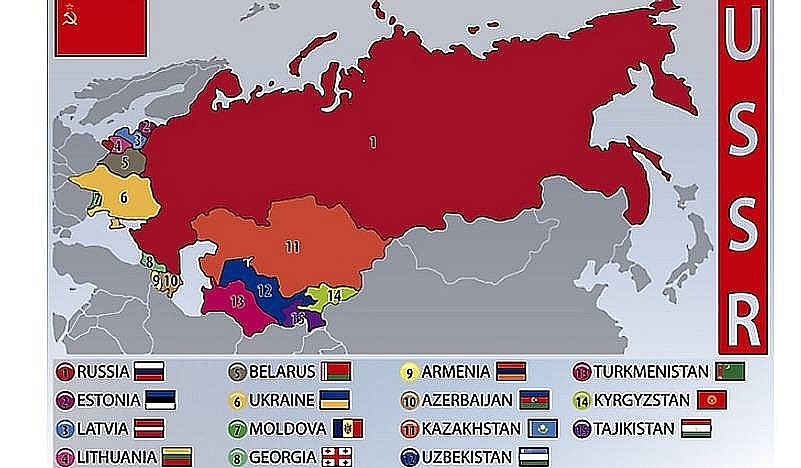 |
| Full List of Countries: Map and flags of the 15 republics of the former USSR |
Origins and Expansion
The Soviet Union was formally created in 1922 under the leadership of Vladimir Lenin, evolving from the Russian Empire and the aftermath of the 1917 revolution. Its initial founding republics included Russia, Ukraine, Belarus and the Trans-Caucasian federation (Georgia, Armenia, Azerbaijan). Over time, it expanded to include 15 republics.
Under the leadership of figures like Joseph Stalin, the USSR underwent massive industrialisation, collectivisation and became a superpower. It spanned over 11 time zones and at its height covered more than one-sixth of the Earth's land surface.
Institutional and Structural Features
-
Centralised command economy: state planning, state-owned enterprises, collectivised agriculture dominated the system.
-
Single-party political system (the Communist Party) with Russian dominance in both language and governance.
-
Nationalities policy: The USSR contained dozens of ethnic groups, languages and cultures. While the republics had some cultural autonomy, political power remained tightly controlled.
-
Foreign-policy reach: The USSR was a global player, engaged in Cold-War competition, satellite states and an ideological struggle with the West.
The Seeds of Collapse
By the late 1980s, the Soviet system was under mounting stress: economic stagnation, rising debt, demographic and health issues (declining life expectancy in some areas), and growing demands for political and national reform. The reforms introduced under Mikhail Gorbachev — perestroika (restructuring) and glasnost (openness) — opened spaces of dissent and ferment.
Finally, on 25 December 1991 the USSR was formally dissolved, and the fifteen constituent republics became independent states.
Part II: Transition and Transformation
When independence arrived, the newly-minted states faced multiple simultaneous tasks: to establish statehood (constitutions, institutions), redirect foreign policy, switch economic systems, and deal with the legacies of the Soviet era (infrastructure, industry, security arrangements, identity). Yet the trajectories they followed diverged widely.
Shared Challenges
-
Economic collapse: Most underwent deep recessions in the early 1990s as Soviet supply-chains broke, state subsidies vanished and reform programmes began.
-
Political uncertainty: Some states moved toward pluralism, others reverted to strongman rule; in many, the line between political reform and authoritarian continuity blurred.
-
Foreign-policy re-orientation: The new states faced a choice of alignment — towards the West (EU/NATO), toward Russia, or adopting a multi-vector approach (China, Turkey, etc.).
-
Regional organisations and influence: Structures such as the Commonwealth of Independent States (CIS) were formed to manage the post-Soviet legacy. Meanwhile Russia sought to retain influence in its so-called "near abroad."
Regional Groupings and Their Trajectories
To make sense of variation, the fifteen states are often grouped into five sub-regions:
1. The Baltic States – Estonia, Latvia, Lithuania
These three moved fastest toward Western integration. They rekindled pre-Soviet democratic traditions, adopted rapid reforms, and became members of both the European Union and the North Atlantic Treaty Organization in 2004. Their economies were restructured, they embraced digital governance and remain among the most advanced in the post-Soviet space.
2. Eastern Europe & Northern Eurasia – Belarus, Ukraine, Moldova
Here, transitions were more contested. Ukraine and Moldova oscillated between reformist and pro-Russian governments; Belarus retained a very strong autocratic governance style with close ties to Russia. This sub-region has been the site of many of the most visible geopolitical flashpoints and conflicts.
3. South Caucasus – Armenia, Azerbaijan, Georgia
After independence these countries confronted territorial disputes (Nagorno-Karabakh/Artsakh, Abkhazia, South Ossetia), competing regional influences (Russia, Turkey, Iran) and internal political instability. Each followed a distinct path: for example, Georgia made strong reform attempts; Azerbaijan developed rapidly thanks to energy resources; Armenia faced the challenge of geography and conflict with Azerbaijan.
4. Central Asia – Kazakhstan, Kyrgyzstan, Tajikistan, Turkmenistan, Uzbekistan
This group features large land-locked states, many with authoritarian regimes, resource-rich economies or heavy remittances from labour migration. Some opened more than others (e.g., Uzbekistan in recent years). However, the pattern here tends toward stability at the cost of political liberalisation.
5. Russia – Russia (the successor state)
While technically one of the fifteen, Russia plays a distinct role as the dominant power in the region. It inherited the USSR's UN Security Council seat, nuclear arsenal, and much of its institutional frameworks. Its trajectory shapes that of many neighbouring states.
Part III: The Situation in 2025
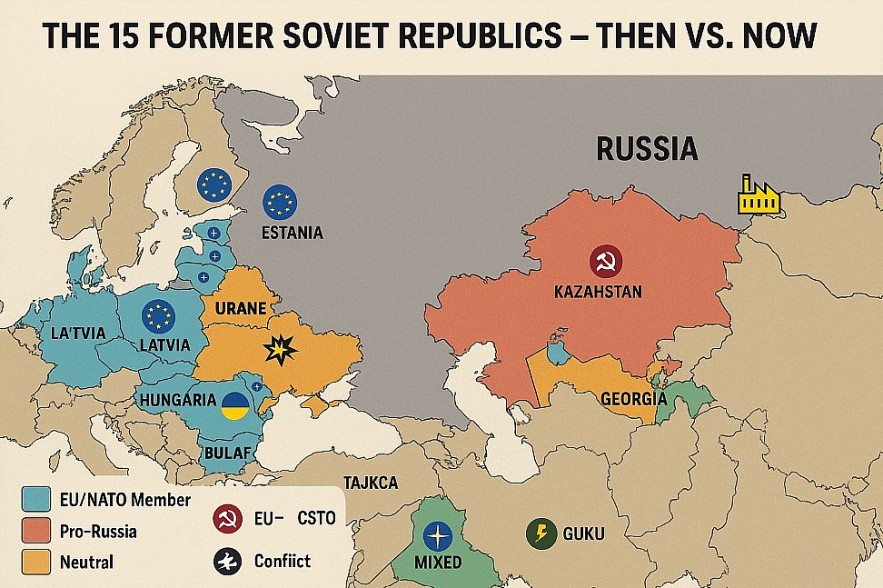 |
| The 15 Former Soviet Republics – Then vs. Now |
Broad Trends and Patterns
-
Geo-politics reshaped: The post-Soviet space is no longer dominated solely by Moscow. States are increasingly pursuing multi-vector foreign policies, balancing China, Turkey, the West and Russia.
-
Varied governance and economic outcomes: Some states (especially in the Baltics) have made major progress in democratic governance and market economy; others remain tightly controlled, with weak rule of law and limited pluralism.
-
Legacy of conflicts and "frozen" zones: Disputed territories such as those in the South Caucasus and Eastern Europe continue to create instability — for example, Transnistria in Moldova.
-
Identity and memory politics: How these states deal with the Soviet past matters: removal of monuments, historical narratives, language policy and national identity are active fronts. In 2025, Kyrgyzstan removed Central Asia's largest Lenin statue, a symbolic break from its Soviet legacy.
-
Russia's influence under strain: While still powerful, Russia's grip has weakened in certain quarters, especially as other powers step in and internal Russian challenges mount.
-
Deep inequalities and resource-dependence: Many states remain dependent on natural-resources, foreign investment, remittances or Russia/China for economic support. Diversification remains a major challenge.
Selected National Snapshots
Estonia
Independent since 1991, Estonia quickly pursued integration with Western structures. It adopted the euro, embraced digital governance, and is often cited as a model among post-Soviet states for both economic and institutional reform.
Ukraine
Ukraine declared independence in 1991. Since then, it has faced waves of reform and reversal, corruption challenges, and conflict with Russia — including the annexation of Crimea in 2014 and the full-scale invasion from 2022. In 2025, Ukraine remains under war conditions, yet its European orientation has deepened significantly.
Belarus
Belarus has largely retained Soviet-style governance, with Alexander Lukashenko in power since 1994. In 2025, he secured another term in an election widely criticised as undemocratic. Belarus remains closely aligned with Russia politically and militarily.
Azerbaijan
Azerbaijan has leveraged its oil and gas reserves for rapid economic growth. In 2025, media freedom is nearly nonexistent. The government maintains a strong authoritarian grip despite a pragmatic, shifting foreign policy.
Kazakhstan
The largest land-locked country in the world, Kazakhstan has built a relatively stable economy on oil and mineral wealth. It maintains authoritarian governance but shows signs of slow reform and balances relations with Russia, China, and the West.
Kyrgyzstan
More politically volatile than its neighbours, Kyrgyzstan has experienced several revolutions since independence. The 2025 removal of a major Lenin monument reflects a symbolic turn away from the Soviet past and toward renewed national identity.
Russia
Russia retains economic, military, and geopolitical dominance in the region, but sanctions, war, and demographic strain have impacted its long-term outlook. Its relations with other former republics remain a central dynamic of Eurasian politics.
Part IV: Key Implications & What to Watch
Implications
-
The "post-Soviet" label is increasingly contested, as it can obscure national sovereignty and unique paths of development.
-
Smaller states are asserting more agency, exploring ties with the EU, China, Turkey, and other partners.
-
Governance quality is a major determinant of development outcomes across the region.
-
Economic diversification remains a pressing priority.
-
Unresolved conflicts still obstruct regional stability and growth.
What to Watch
-
Elections and transitions in authoritarian states (e.g., Belarus)
-
Shifts in foreign-policy orientation (e.g., Georgia, Uzbekistan)
-
Progress in economic reforms and innovation
-
Strengthening of rule-of-law institutions
-
Cultural shifts around Soviet memory and national identity
Part V: Country‑by‑country profiles
These 15 mini-profiles reflect wide variation among the post-Soviet republics. While some (e.g., the Baltics) are now high-income democracies, others (particularly in Central Asia and the Caucasus) still face major governance and economic reform challenges. All are still shaped by their Soviet past, but the directions they are heading in 2025 are increasingly distinct and self-determined.
1. Russia
Population: ~146 million
GDP (nominal): ~$2.54 trillion (2025 est.)
HDI: 0.822 (2024), classified as very high
Transition Summary:
Russia inherited the core of the Soviet state, including its military, nuclear arsenal, and UN Security Council seat. Following market reforms in the 1990s, the country stabilised under Vladimir Putin's leadership with a mix of state capitalism and political centralisation.
Challenges:
-
Sanctions and isolation stemming from the 2022 invasion of Ukraine
-
Aging population and shrinking workforce
-
Over-reliance on fossil fuels and weak diversification
Opportunities:
-
Massive resource base (oil, gas, metals, timber)
-
Strategic Eurasian location with potential for transcontinental logistics
-
Potential to pivot to new energy technologies and regional cooperation if relations improve
2. Estonia
Population: ~1.37 million
GDP (nominal): ~$43 billion (2024)
GDP per capita: ~$31,000
HDI: 0.905 (2023)
Transition Summary:
Estonia regained independence in 1991 and rapidly adopted market and political reforms. Known globally for its digital infrastructure, it joined the EU and NATO in 2004.
Challenges:
-
Regional inequality between urban and rural areas
-
Emigration of skilled workers
Opportunities:
-
Advanced e-governance and cybersecurity capabilities
-
Potential to lead in digital innovation and green energy
3. Latvia
Population: ~1.9 million
GDP per capita: ~$23,400
HDI: 0.863 (2023)
Transition Summary:
Latvia followed a similar path as Estonia, joining the EU and NATO in 2004. The economy is open and export-driven, with strong links to Western Europe.
Challenges:
-
Emigration and shrinking labour force
-
Vulnerability to economic fluctuations
Opportunities:
-
Strong transport/logistics position between Scandinavia and Eastern Europe
-
Growth in ICT, fintech, and sustainable industries
4. Lithuania
Population: ~2.8 million
GDP per capita: ~$29,400
HDI: 0.890 (2023)
Transition Summary:
Lithuania successfully transitioned to a high-income, service-driven economy, aligning itself with the EU and NATO. The country is now an emerging digital and green economy leader.
Challenges:
-
Regional disparity, aging population
-
Labour shortages and rising wages
Opportunities:
-
Logistics and clean energy
-
Strong presence in biotech and fintech sectors
5. Belarus
Population: ~9.2 million
HDI: ~0.824 (2025 est.)
Transition Summary:
Retained a Soviet-style governance model under Alexander Lukashenko. Has close economic and military ties to Russia.
Challenges:
-
Political repression, sanctions
-
Economic dependence on Russia
Opportunities:
-
Strategic location between Russia and the EU
-
Untapped potential in industrial modernization if reforms occur
6. Ukraine
Population: ~35 million (adjusted for wartime displacement)
GDP: Contracted by approximately 30% between 2022–2023 due to war; showing gradual recovery with international assistance in 2024–2025.
HDI: 0.773 (2023)
Transition Summary:
Ukraine declared independence in 1991 after centuries of domination by the Russian Empire and the Soviet Union. The country experienced waves of political reform, corruption, and revolutions — notably the Orange Revolution (2004) and the Euromaidan movement (2013–2014), which led to closer ties with the West and the ousting of a pro-Russian government.
Since 2014, Ukraine has faced direct aggression from Russia: first with the annexation of Crimea, and later with the full-scale invasion launched in February 2022. The conflict has become the largest war in Europe since World War II, reshaping the geopolitical order of the region. Despite massive destruction of infrastructure, cities, and energy systems, Ukraine has mounted a determined resistance, supported by Western military aid, humanitarian assistance, and financial packages from the EU, U.S., and international organizations.
As of 2025, frontlines remain active, primarily in the eastern and southern regions (Donetsk, Luhansk, Zaporizhzhia, and Kherson). Ukraine continues its counteroffensive operations but faces heavy logistical and manpower challenges. The war has caused over 8 million refugees and internally displaced persons, with significant civilian casualties and widespread damage to housing, healthcare, and education infrastructure.
Challenges:
-
Ongoing conflict and occupation of territories
-
Economic contraction and large-scale reconstruction needs
-
Governance under wartime conditions and corruption control
-
Energy insecurity and dependence on Western aid
Opportunities:
-
EU candidate status and deepening integration with Western institutions
-
Reconstruction and modernization with green and digital infrastructure
-
Strong agricultural and technology sectors positioned for postwar recovery
-
Mobilization of international alliances for long-term security guarantees
Outlook (2025 and Beyond):
Ukraine’s resilience has galvanized Western unity and reshaped European defense policies. However, the war’s duration and Russia’s continued aggression pose severe humanitarian and economic challenges. The long-term future hinges on sustained international support, effective governance, and a post-conflict security settlement that ensures sovereignty and stability.
7. Moldova
Population: ~2.6 million
GDP per capita: ~$6,100
HDI: 0.767 (2023)
Transition Summary:
Slower transition with ongoing East-West divides. Transnistria conflict remains unresolved.
Challenges:
-
Political fragmentation, weak institutions
-
Heavy energy dependence and poverty
Opportunities:
-
EU-oriented reforms and support
-
Growth potential in agriculture and wine exports
8. Georgia
Population: ~3.7 million
GDP per capita: ~$8,500
HDI: 0.812 (2023)
Transition Summary:
Post-Rose Revolution, Georgia pursued pro-Western reforms. Faces territorial disputes with Russia.
Challenges:
-
Frozen conflicts (Abkhazia, South Ossetia)
-
Political instability and economic inequality
Opportunities:
-
Black Sea connectivity and energy transit
-
Rapid growth in tourism and wine exports
9. Armenia
Population: ~2.8 million
GDP per capita: ~$6,800
HDI: 0.791 (2023)
Transition Summary:
Post-independence Armenia dealt with conflict over Nagorno-Karabakh and dependence on Russia.
Challenges:
-
Security risks and isolation
-
Emigration of skilled population
Opportunities:
-
Rising tech and IT outsourcing sector
-
Diaspora investments and tourism
10. Azerbaijan
Population: ~10.3 million
GDP per capita: ~$9,500
HDI: 0.789 (2023)
Transition Summary:
Oil wealth has powered rapid economic development. Political openness remains limited.
Challenges:
-
Over-reliance on hydrocarbons
-
Suppressed civil liberties
Opportunities:
-
Investment in non-oil sectors (logistics, tourism)
-
Strategic location for regional trade
11. Kazakhstan
Population: ~20 million
GDP per capita: ~$11,200
HDI: 0.822 (2023)
Transition Summary:
A major energy exporter with a stable political regime. Pursues a multi-vector foreign policy.
Challenges:
-
Corruption and limited political openness
-
Economic diversification needed
Opportunities:
-
Infrastructure development via Belt and Road
-
Renewable energy and green tech potential
12. Kyrgyzstan
Population: ~7 million
GDP per capita: ~$1,400
HDI: 0.694 (2023)
Transition Summary:
More pluralistic than neighbours, but with recurring political crises and low economic development.
Challenges:
-
Reliance on remittances
-
Governance and corruption issues
Opportunities:
-
Tourism and eco-adventure
-
Potential for service outsourcing
13. Tajikistan
Population: ~10 million
GDP per capita: ~$900
HDI: 0.672 (2023)
Transition Summary:
Suffered civil war post-independence. Now authoritarian and dependent on remittances.
Challenges:
-
Fragile infrastructure and poverty
-
Water and climate vulnerability
Opportunities:
-
Hydropower exports
-
Regional energy and water cooperation
14. Turkmenistan
Population: ~6 million
GDP per capita: ~$7,000
HDI: 0.733 (2023 est.)
Transition Summary:
Highly authoritarian, gas-dominated economy with limited reform.
Challenges:
-
Opaque governance and poor human rights record
-
Limited foreign investment
Opportunities:
-
Natural gas pipelines to Asia and Europe
-
Transit corridor potential between Central Asia and Middle East
15. Uzbekistan
Population: ~36 million
GDP per capita: ~$2,300
HDI: 0.720 (2023)
Transition Summary:
Post-2016 reforms under President Mirziyoyev opened economy and diplomacy. Still authoritarian but reform-oriented.
Challenges:
-
Human rights and press freedom
-
Need for deep structural reform
Opportunities:
-
Manufacturing and agriculture exports
-
Major hub on China's Belt and Road
Conclusion
The fifteen states that emerged from the Soviet Union did not follow a single script. Some embraced rapid reform, others retained Soviet-style governance; some turned to the West, others remained aligned with Russia or shifted east.
In 2025, the post-Soviet space is a diverse and dynamic region. While the Soviet legacy remains present in infrastructure, governance, and memory, these nations are shaping their own futures — with complexity, divergence, and ambition. Understanding their trajectories is essential for grasping the future of Eurasia and the global order.
FAQs
How many countries were part of the Soviet Union?
The Soviet Union was made up of 15 republics: Russia, Ukraine, Belarus, Moldova, Estonia, Latvia, Lithuania, Georgia, Armenia, Azerbaijan, Kazakhstan, Uzbekistan, Turkmenistan, Kyrgyzstan, and Tajikistan.
Why did the Soviet Union collapse?
The USSR collapsed due to a combination of economic stagnation, political reform (glasnost and perestroika), national independence movements, and weakening central authority under Mikhail Gorbachev in the late 1980s. It officially dissolved in December 1991.
Which former Soviet republics joined the European Union?
Estonia, Latvia, and Lithuania (the Baltic states) joined the European Union and NATO in 2004. Others like Ukraine, Moldova, and Georgia are seeking deeper EU integration.
Are all former Soviet states democratic today?
No. While some (like the Baltics) have strong democracies, others remain authoritarian or hybrid regimes, especially in Central Asia and Eastern Europe.
Is Russia still influential in former Soviet countries?
Yes, Russia maintains significant influence in some former republics through military, economic, cultural, and political means. However, its dominance has declined in regions like the Baltics, South Caucasus, and Ukraine.
Which post‑Soviet countries are the most economically developed?
The Baltic states (Estonia, Latvia, Lithuania) lead in economic and human development indicators. Russia and Kazakhstan also have large economies, though with less diversification.
What are the major challenges facing post‑Soviet countries today?
Key challenges include corruption, authoritarianism, unresolved territorial conflicts, economic diversification, demographic decline, and geopolitical pressure from larger powers like Russia and China.
What is the future of post‑Soviet countries?
The future varies: some aim for EU or NATO membership, others maintain alliances with Russia or pursue neutrality. Their trajectories depend on internal reform, regional stability, and global geopolitical shifts.
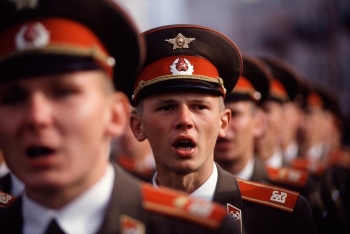 17 Little-Known Facts About Russia 17 Little-Known Facts About Russia Russia which is the largest country in the world is a transcontinental country located in Eastern Europe and Northern Asia. Factretriever states 17 interesting facts ... |
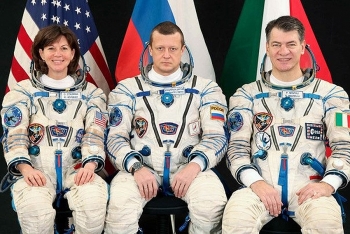 15 Weirdest Things You Can Only See in Russia 15 Weirdest Things You Can Only See in Russia The Russians are notorious for their strange customs. Are you intrigued by Russian customs? Here is a list of what people from outside Russia think ... |
 Top 10 Most Haunted & Ghostly Destinations in Russia Top 10 Most Haunted & Ghostly Destinations in Russia To know more about top 10 most haunted places in Russia, keep reading the article below. |
 Top 25 Most Beautiful Russian Women: Irresistibly Charming And Jealousy Top 25 Most Beautiful Russian Women: Irresistibly Charming And Jealousy Russia is always in the top countries with the most beautiful and attractive women in the world. Russian women are so beautiful that the world ... |










